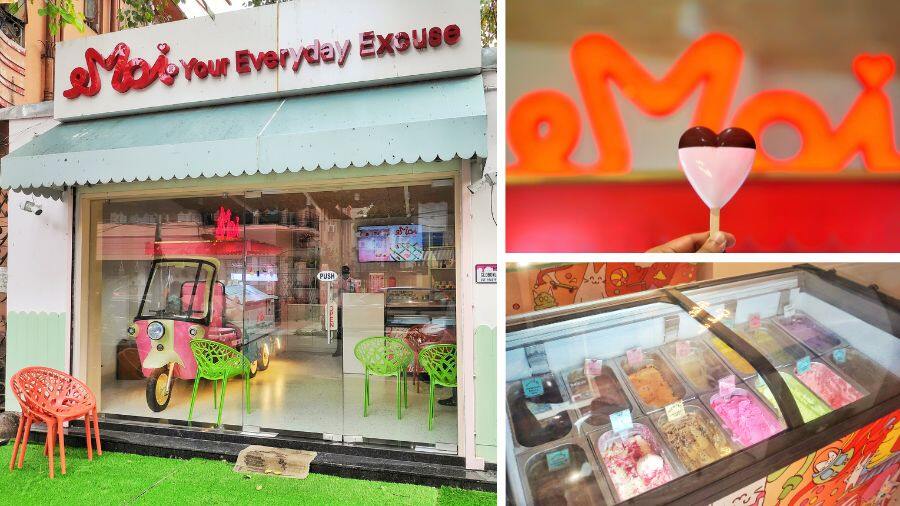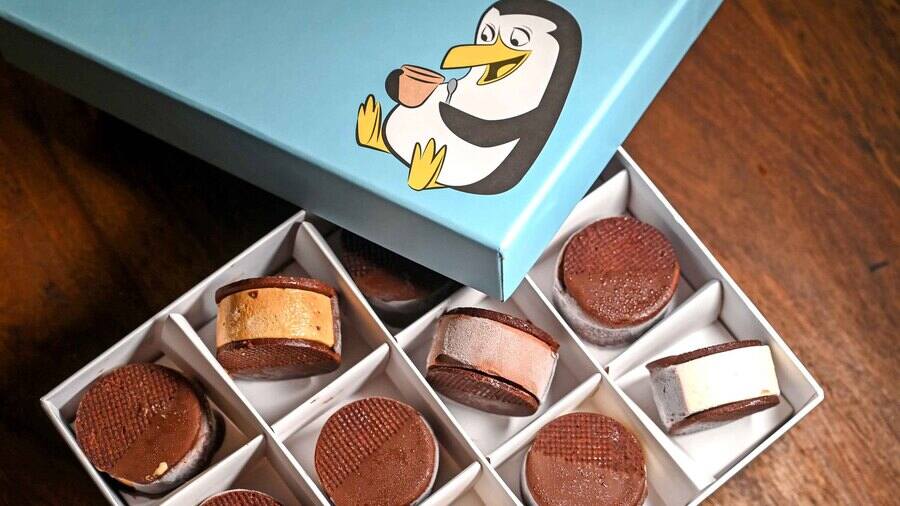Visiting the Indian Ice cream Expo 2023, that took place in Kolkata recently, was much like stepping into Willy Wonka’s Chocolate Factory. The sweet smell of vanilla and cocoa filled the air, and samples on display teased the taste buds. Apart from a taste of the desserts, the highlight was finding out all about the magic (read: technology) behind creating this much-loved dessert.
The Indian Ice Cream Expo 2023 (IICE) organised by the Indian Ice Cream Manufacturers’ Association (IICMA) brought together 26 national and international companies that offer the latest technology and trends in ice-cream manufacturing machinery to showcase their technology, trends and ingredients contributing to the Ice cream industry of the country.
My Kolkata took a tour to find out what goes into making our favourite frozen desserts on an industrial scale.
Base ingredients
While Wonka had a list of exotic and whimsical ingredients, the first step in ice-cream making involves simple everyday base ingredients — milk, cream, sugar and stabilisers. Milk and cream provide the fat and protein that give ice creams their rich taste and texture. Of course, keeping in mind dietary habits and restrictions, there are ice creams made with milk alternatives extracted from soya and nuts, all of which could be seen at the expo.
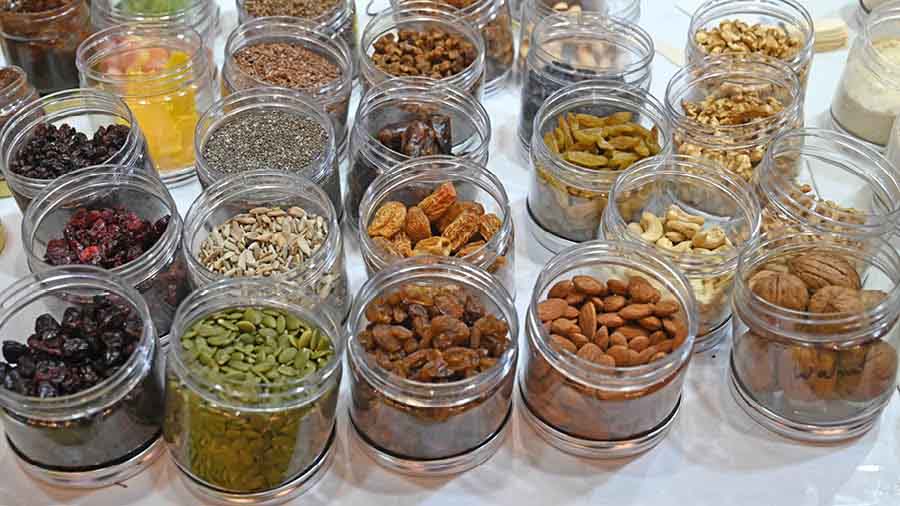
Dry fruits, nuts and seeds used in ice creams
Then comes sugar or healthier substitutes like stevia, which add sweetness to the concoctions, beyond the sweetness it gets from certain natural flavours. Stabilisers, such as gums or gelatin, help prevent ice crystals from forming and keep the air bubbles intact in the dessert, giving you a bowl of creamy goodness. The quality and quantity of these ingredients vary depending on the type and category of ice cream.
Some natural fats and oils are also used in the making of the ice cream for the rich mouthfeel they can lend to the dish, as well as smoothness and longer stability for a longer shelf life. Companies like Amsterdam-based Bunge, who deal in specialty oils and fats for ice creams, participated in the expo.
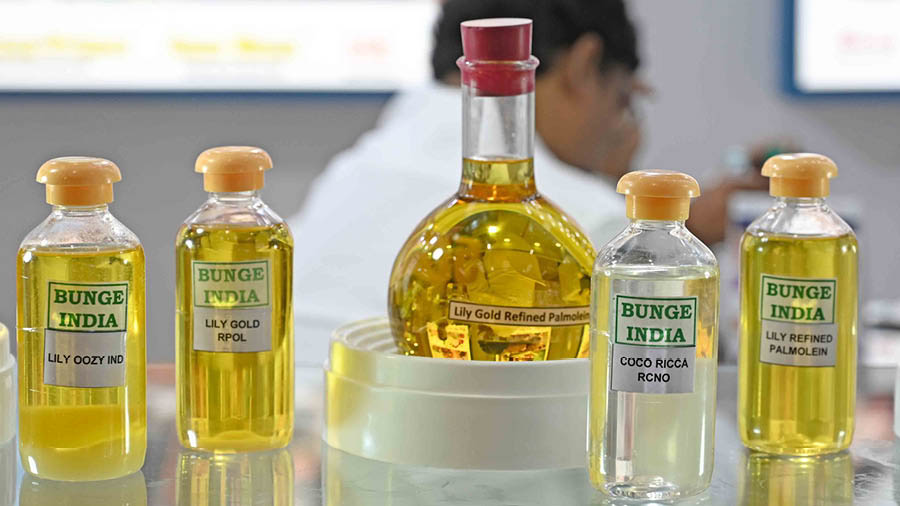
Fats and oils work as stabilisers and adds to the smooth, rich mouth feel of an ice cream
Flavours and essence
Fruity, nutty, a mix of both, or whimsical and exotic — the flavouring of an ice cream is possibly the most important thing that will attract you to an ice cream. Various companies manufacturing flavours and essence specifically for ice creams joined the expo in Kolkata. After pasteurisation, homogenisation, cooling and ageing of the base mix, it is time for adding flavours and essence, which can be natural or artificial.
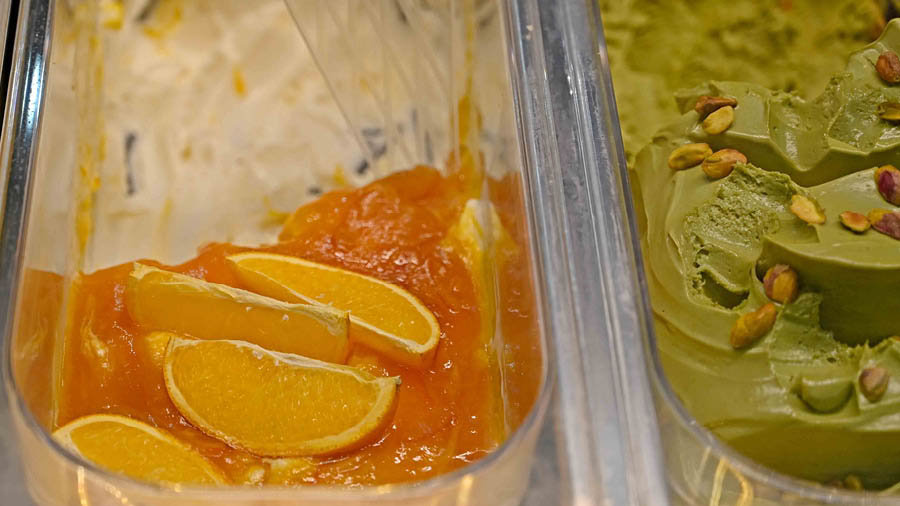
Fruit and nut-based gelato flavours on display
Flavours such as vanilla, chocolate, coffee, strawberry, etc., are added to the mix before or during freezing. The flavours in liquid or powdered forms, especially for ice creams, are made by different companies in India.
Natural flavouring agents are usually derived from plants, though sometimes flavours can go through a fermentation process, which needs the introduction of microorganisms. Artificial flavouring agents are synthesised from chemicals, such as ethyl vanillin, benzaldehyde, etc. Flavouring agents are one of the most important factors that influence consumer preference and satisfaction with ice creams. Therefore, ice-cream makers usually select and use flavouring agents carefully to create high-quality and delicious products.
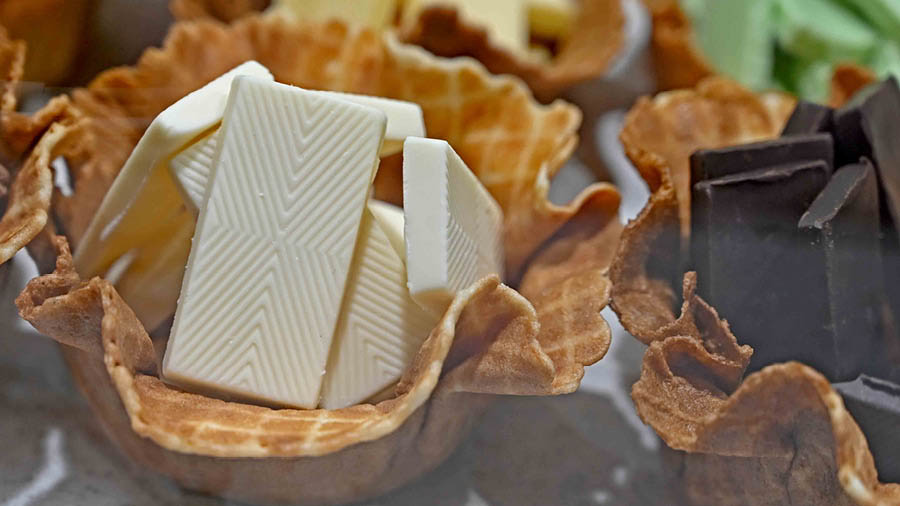
White and dark chocolate compounds used in ice cream making
Companies like Morde (also known for their chocolate compounds for baking and cooking), Barry Callebaut, 2m, etc. brought premium chocolates — white, dark, ruby and others — to the expo for ice-cream manufacturers.
Some ingredients, such as nuts, fruits, chocolate chips, fruit pastes, cereals etc. are added after freezing. “The dry fruits are specially chopped to add into the ice cream. The grade and cutting also depends on the demand of the ice cream brands,” said Anand Kumar Pandey, assistant general manager, Tulsi Nuts and Dry Fruits, Delhi
Filling and packaging

Samples of containers and packaging on display
Packaging is an important part of the ice cream industry. Packaging ice cream in a factory is a step that involves different machines and methods depending on the type and shape of the product. Ice cream packaging has to ensure that the product is protected from contamination, damage and melting during transportation and storage. Rotary fillers are often used to fill cups or cones by using a rotating plate with holes that match the shape of the containers. The containers are fed into the machine by a conveyor belt and filled with ice cream by a piston or pump. The containers are then sealed with lids or caps and discharged from the machine.
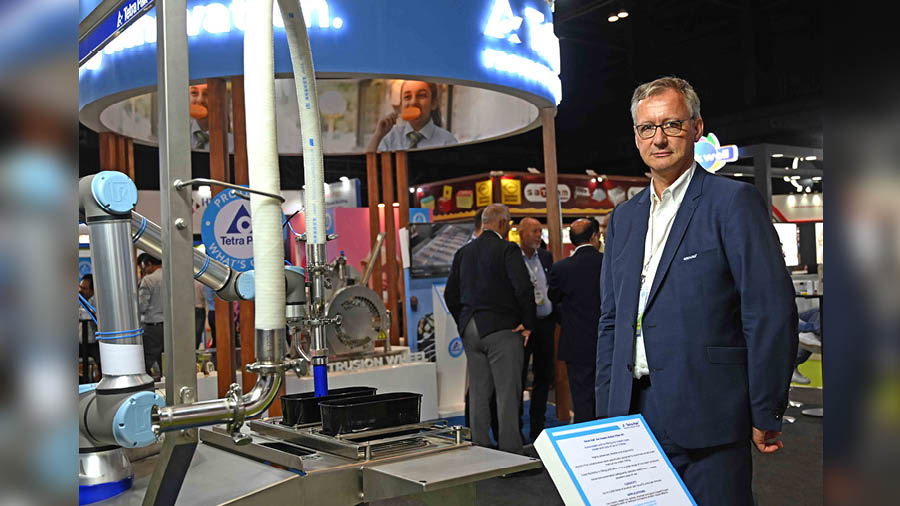
Thomas Prüẞmeier with the Tetra Pak Ice Cream Robot Filler
Among the many interesting machines on display was the Tetra Pak Ice Cream Robot Filler, which has a robotic arm used to fill cones and moulds. According to Thomas Prüẞmeier, area sales support manager, Tetra Pak Processing Equipment GmbH, the equipment has a special feature that helps in making sure the desserts are not contaminated by touch. A special ‘shock system’ of sorts is activated when anything or anyone touches the robotic arm, and the machine stops automatically, thus protecting the precious desserts.
Cones for your favourite Cornetto- style treats are usually manufactured separately by companies like Delhi-based Kap Cones and they come in various types from the old-school wafer cones and the popular waffle cones to things like biscuit and sugar cones.

Packaging for cones
Slurpy ice creams like popsicles (or those tongue-staining orange sticks), usually have specialised moulds as well and have to be packaged frozen, while the cups can be filled first first and then stored at a low temperatures. The moulding of an ice cream is a familiar factory process — a line of specialised moulds are fed into a machine via a conveyor belt and then filled with ice cream by a piston or pump ( or a robotic arm in some cases!). The moulds are then dipped into a brine solution that freezes the ice cream quickly. The frozen ice cream can be removed from the moulds by air or water jets.
There are companies that make all of these little things that go into packaging your treat — from the moulds and tubs and cups to the stickers on the packaging. After all, it is the packaging that displays the important product information, such as brand name, flavour, ingredients, nutrition facts, etc.,and pulls the consumers.
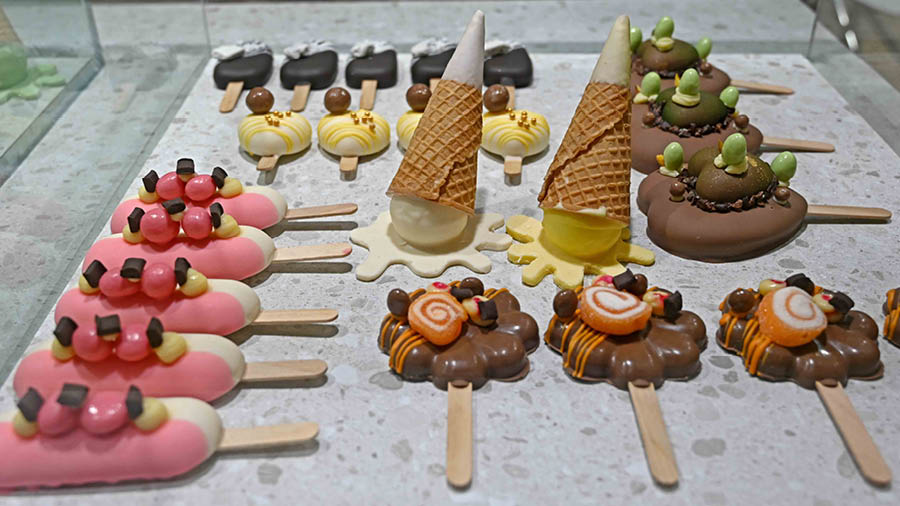
Chocolate coated popsicles on display
Storage and transport
Once your ice cream is moulded, filled into containers and packaged, it has to stay nice and cool and hold its shape until it reaches you. This is where the blast freezer comes in!
Factories need to store their products in a frozen state before it is dispatched to distributors and retailers and the industrial blast freezer — imagine a large, and very cold room — is perhaps the most important part of the process. Companies like Haier make these blast freezers, which are essentially large, closed containers, through which cold air circulates at high speed, that freezes ice cream to about -30°C in a short time. The storage freezers, that maintain a temperature below -18°C, are also made by companies for stores.

Gelatos and creamy ice creams on display at the expo
A visit to the expo was like discovering how the Oompa Loompas created all that chocolate 3 except with a touch more science that magic, but almost the same kind of creativity. A look into trends in ice cream manufacturing machinery, cone production, printing and packaging equipment, flavours & fragrances, food ingredients, dried fruits, nuts, spices, and saffron expertise, etc, revealed the technicalities behind that tub you love to dig into.
Firoz H. Naqvi, founder, MashAd Multicom that managed and organised the event said, “Organising IICE 2023 in Kolkata was a challenge since not many ice cream brands or manufacturing units are there in the eastern region. But this event was beyond successful as we received an amazing response. The event also brought together traders, stockists, raw material suppliers, milk powder and chocolate providers, and ice cream brands seeking expansion opportunities.”

